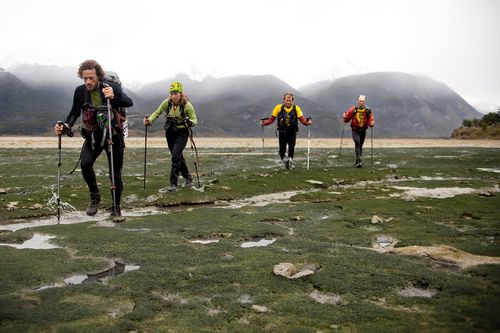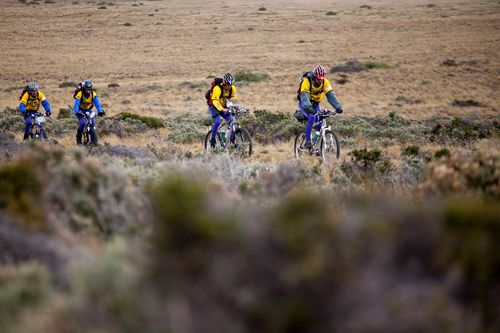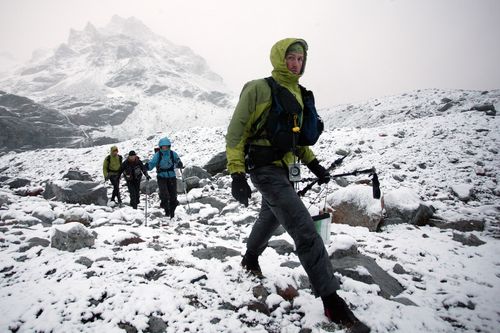
By
If I remember the moment right, my pen was shaking a little bit as I wrote out my thoughts. The quoted words below, which ended up initiating a column last winter about my once-in-a-lifetime expedition to South America, are haunting me just a little bit today: “My head is still spinning. The experience has not yet sunk in. Last month, after almost seven straight days of racing — and hundreds of miles traveled on bike, foot, and in a kayak — our team completed the Wenger Patagonian Expedition Race in Tierra del Fuego, Chile. . . .”
It was late in February 2010 when I penned this introduction in a notebook in Chile. My feet were still raw from the race, a 350-mile trip. My nerves were scrambled a bit from the craziness of it all.
Indeed, I had just finished a weeklong adventure race through some of the most remote terrain on the planet. Tierra del Fuego, an archipelago in southern Chile that peters to the tip of the continent, had posed arid fields, thick forests, mountains, and deep fjords.
This month, I am going back to Chile. The Wenger Patagonian Expedition Race, for me, is looking like it'll be a “twice-in-a-lifetime” experience after all. I've assembled the same team to head back down to do the race again. My wife says this might be the last time.

She is half-smirking with this comment. But she knows, and I know, too, that a race like this is indeed a serious event. Gear gets you only so far. The race requires physical fitness as well as expert backcountry skills. In the southerly latitudes of Patagonia, where trails are rare and few humans can be found, the term “wilderness” takes on a new connotation altogether.
In the Wenger Patagonian Race, which has been held since 2004, you traverse the wilds with a map and compass in hand, no GPS allowed. The goal is to find checkpoint flags hidden miles apart that lead, after days on the move, to a finish line hundreds of miles away.
Bikes, kayaks, and trekking shoes provide transport through the course. You switch disciplines every day or so, with food drops and gear transported by a race staff that coordinates deliveries via boat, helicopter or 4WD vehicle ahead of the pack.
Instead of Tierra del Fuego, this year the race moves north in Patagonia to the area around Chile's Southern Continental Ice Field. Disciplines will again include kayaking, mountain biking, trekking, navigation, and ropework in the mountains that spike and interrupt the land.
For gear, I plan to bring a bit more of it this year. Last time, leaning on a fast-and-light mantra, my team skimmed by with just barely enough. We ran out of food at one point. Our water-purification tools were lacking. At night, late in the race, I shook with cold, a deep and uncontrollable reaction signaling a primal need for heat. I had every stitch of clothing on, and I still couldn't warm up.
Gear is crucial in Patagonia. But it's just one piece in the puzzle. My team knows the game, and we're ready to get on with the race. If we eat right, stay warm, keep hydrated, and keep our heads right, we might just pass the test. Our goal is a finish line in the remotest Patagonia. Wish us luck if you can. We're going to need it!

Photos from 2010 Wenger Patagonian Expedition, by T.C. Worley
–Follow during the race.